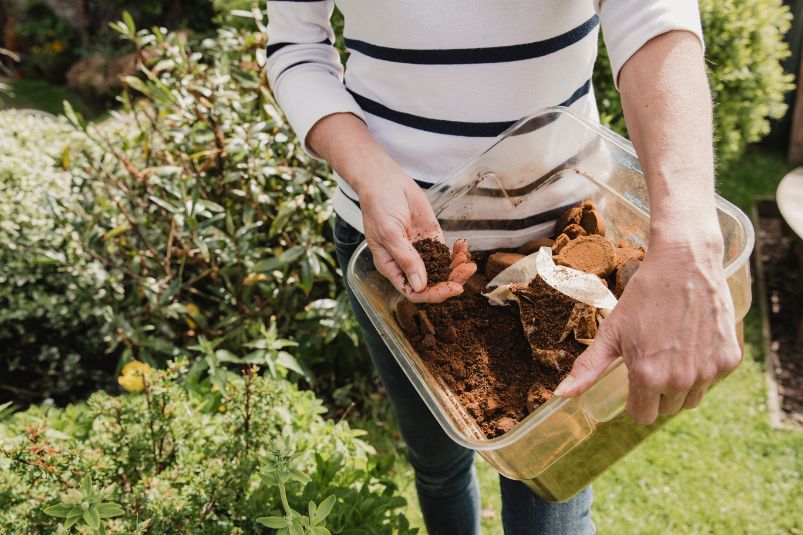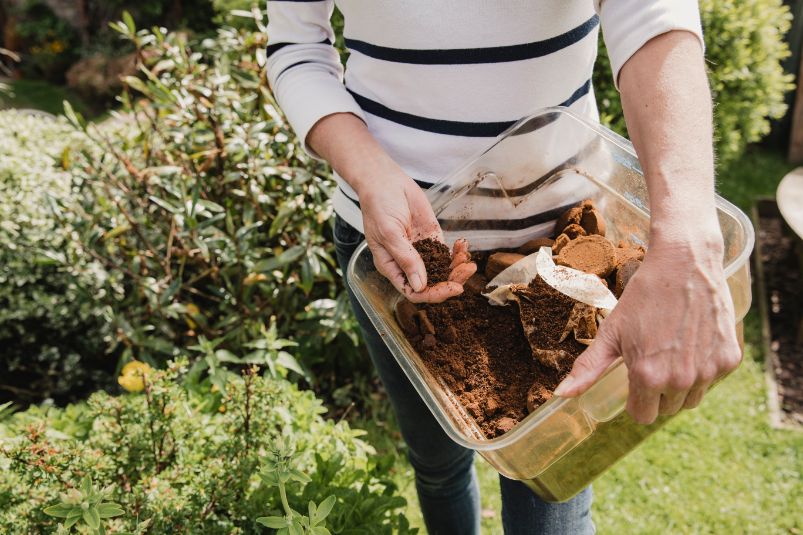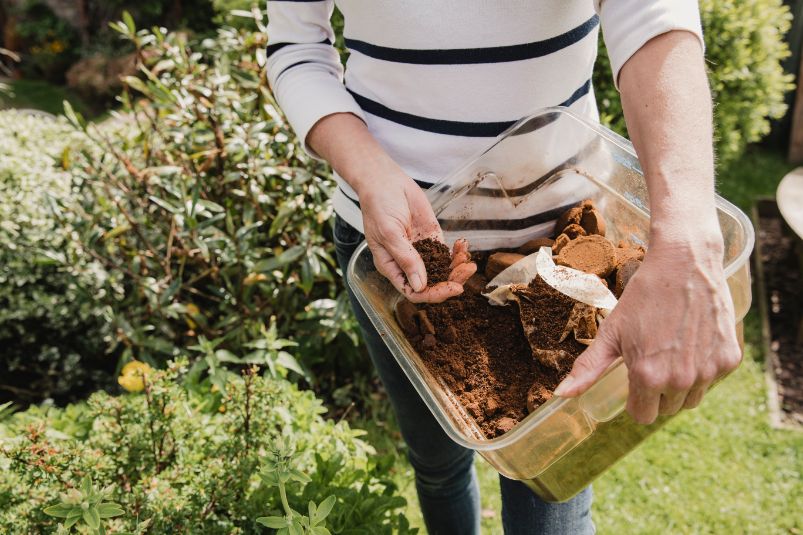Tough Upbringing

People who love gardening are always looking for new ways to make their plants healthier and more vibrant. Nowadays, people are more interested in making their own fertilizer, which is a more environmentally friendly and economical method. With the help of this article, you can make healthy fertilizer at home.get startedWhy fertilizer is important for plant growthBefore we discuss how to make your own fertilizers, let’s discuss why they are so important for plant health. Fertilizer provides plants with the nutrients they need to grow strong roots, lush leaves and bright flowers. As an additional food source for plants, they provide the right amounts of nitrogen, phosphorus and potassium. Towards making your own chemicalsIn this eco-friendly era, more and more farmers are looking for sustainable alternatives to store-bought nutrients. Making your own fertilizer is not only good for the environment, but also gives you the opportunity to tailor your fertilizer to the specific needs of your plants. Benefits of making your own fertilizerhow much does something costOne of the biggest benefits of making your own fertilizer is that you save money. There’s no need to buy expensive store-bought fertilizer when you can turn everyday items into powerful plant boosters. the effect on the environmentTraditional fertilizers often contain chemicals that are harmful to the environment. Homemade pesticides, on the other hand, are made from natural materials and therefore have less impact on the environment.

Make changes to meet the needs of each facilityDifferent plants need different amounts of nutrients. By using homemade fertilizer, you can be sure that you are giving your plants exactly what they need to grow well and stay healthy. Things commonly used in homemade fertilizersfood scrapsThere are many possible fertilizers in your kitchen. You can turn fruit and vegetable leaves, used coffee grounds, and ground eggshells into nutrient-rich plant foods. egg-shellEggshells are great for strengthening plant cell walls because they are rich in calcium. They’re easy to add to your poop mixture – just crush them. grind coffeeAdding used coffee grounds to homemade fertilizer can provide them with plenty of nitrogen. They also help with soil structure and retain moisture. Epsom saltsEpsom salt consists of magnesium and potassium and is a great way to help your plants grow. It helps plants absorb nutrients better and is generally beneficial to plant health. How to make homemade fertilizerBasic universal fertilizerGround eggshells, food scraps and coffee grounds should be mixed together in equal parts. Mix well and sprinkle around the base of the plants. Nitrogen-rich soil improverMix coffee grounds and grass clippings together and let it break down. This will help plants grow that need nitrogen. This mixture is ideal for vegetables and leafy greens because it is rich in nitrogen. Chemicals that add phosphorusBone meal, banana peels and wood ash can be mixed together to create a phosphorus-rich fertilizer. This mixture is ideal for flowering plants. How to use the appJust the right amount of mixIt is very important to get the right combination of nutrients. To prevent plants from taking up too much fertilizer (which can be harmful), use the recommended amount. How often to applyMost homemade nutrients can be used every four to six weeks.

Change the frequency of occurrence based on the needs of the plant. hunting for certain plantsA plant’s nutritional needs vary from species to species. Vary the amount of fertilizer based on the plants in your garden. Warnings and things to considerDo not apply too much fertilizerNutrients are important, but too much of a good thing can be bad. Watch your plants for signs of over-fertilization, such as yellowing leaves.People who love gardening are always looking for new ways to make their plants healthier and more vibrant. Nowadays, people are more interested in making their own fertilizer, which is a more environmentally friendly and economical method. With the help of this article, you can make healthy fertilizer at home.get startedWhy fertilizer is important for plant growthBefore we discuss how to make your own fertilizers, let’s discuss why they are so important for plant health. Fertilizer provides plants with the nutrients they need to grow strong roots, lush leaves and bright flowers. As an additional food source for plants, they provide the right amounts of nitrogen, phosphorus and potassium. Towards making your own chemicalsIn this eco-friendly era, more and more farmers are looking for sustainable alternatives to store-bought nutrients. Making your own fertilizer is not only good for the environment, but also gives you the opportunity to tailor your fertilizer to the specific needs of your plants. Benefits of making your own fertilizerhow much does something costOne of the biggest benefits of making your own fertilizer is that you save money. There’s no need to buy expensive store-bought fertilizer when you can turn everyday items into powerful plant boosters. the effect on the environmentTraditional fertilizers often contain chemicals that are harmful to the environment. Homemade pesticides, on the other hand, are made from natural materials and therefore have less impact on the environment. Make changes to meet the needs of each facilityDifferent plants need different amounts of nutrients. By using homemade fertilizer, you can be sure that you are giving your plants exactly what they need to grow well and stay healthy. Things commonly used in homemade fertilizersfood scrapsThere are many possible fertilizers in your kitchen. You can turn fruit and vegetable leaves, used coffee grounds, and ground eggshells into nutrient-rich plant foods. egg-shellEggshells are great for strengthening plant cell walls because they are rich in calcium. They’re easy to add to your poop mixture – just crush them. grind coffeeAdding used coffee grounds to homemade fertilizer can provide them with plenty of nitrogen. They also help with soil structure and retain moisture. Epsom saltsEpsom salt consists of magnesium and potassium and is a great way to help your plants grow. It helps plants absorb nutrients better and is generally beneficial to plant health. How to make homemade fertilizerBasic universal fertilizerGround eggshells, food scraps and coffee grounds should be mixed together in equal parts. Mix well and sprinkle around the base of the plants. Nitrogen-rich soil improverMix coffee grounds and grass clippings together and let it break down. This will help plants grow that need nitrogen. This mixture is ideal for vegetables and leafy greens because it is rich in nitrogen. Chemicals that add phosphorusBone meal, banana peels and wood ash can be mixed together to create a phosphorus-rich fertilizer. This mixture is ideal for flowering plants. How to use the appJust the right amount of mixIt is very important to get the right combination of nutrients. To prevent plants from taking up too much fertilizer (which can be harmful), use the recommended amount. How often to applyMost homemade nutrients can be used every four to six weeks. Change the frequency of occurrence based on the needs of the plant. hunting for certain plantsA plant’s nutritional needs vary from species to species. Vary the amount of fertilizer based on the plants in your garden. Warnings and things to considerDo not apply too much fertilizerNutrients are important, but too much of a good thing can be bad. Watch your plants for signs of over-fertilization, such as yellowing leaves.
Feinstein has been looking at stars known as M-dwarfs, which are smaller and cooler than our sun but tend to be much more active, often spitting out massive plumes of particles and radiation. Since M-dwarfs are the most common stars out there, knowing how such conditions affect the habitability of planets around M-dwarfs is essential to understanding how common life might be. Such stellar activity can potentially both help and hinder life: Ultraviolet radiation is thought to be necessary for prebiotic chemistry to begin, but excessive bursts of energy from a star can strip a planet of its atmosphere.

As part of her work, Feinstein has been studying an M-dwarf named AU Microscopii. Born a mere 22 million years ago, the star is orbited by at least two worlds. She and her colleagues have already obtained data about the system using a suite of telescopes, including the optical and ultraviolet Hubble, the X-ray XMM-Newton space observatory, and several ground-based facilities that pick up signals at radio wavelengths (4).
The high-energy ultraviolet and X-ray observations capture activity such as flares bursting from the surface of AU Microscopii. The long-wavelength radio data help identify space weather caused by energetic particles traveling between the star and its planets. The team has combined these data with models to calculate that stellar activity bursting from AU Microscopii is powerful enough to affect planetary atmospheres. They calculate that the two young planets could lose up to 50 percent of their present-day atmospheres as they age.
To find out what’s actually happening on the planets, Feinstein and her team are using the JWST to observe the planetary atmospheres directly, while taking measurements in the X-ray, ultraviolet, and radio to monitor activity originating from the star. By comparing these observations, the researchers can find out, for instance, whether an interaction between the star and its planets is making their atmosphere heat up and become more distended. In this way, they hope to watch as the star refashions these young planets, potentially stripping away protective features such as an ozone layer—and that could offer insights into the likelihood of life arising on such worlds.
Wider Eyes
The search for exoplanet compositions and the peculiar ingredients of life is likely to get yet more help as new high-resolution and broad-wavelength telescopes come online in the near future. The Nancy Grace Roman Space Telescope, planned to launch as early as late 2026, will see in some of the same optical and infrared wavelengths as the Hubble but will have a field of view at least 100 times wider. This should allow it to spot small rocky worlds that are much farther from their parent stars in cooler, potentially more habitable orbits. Gigantic ground-based facilities such as the Extremely Large Telescope, being built in Chile and expected to start collecting data at the end of the decade, will also capture faint light coming from the atmospheres of exoplanets, allowing astronomers to pick out fine details on distant worlds.
And many in the field are hopeful that the HWO comes to fruition in the 2040s. The observatory has a hefty price tag of around $11 billion but broad support in the United States and across the international astronomy community. The HWO is being designed with a coronagraph—a star shade that can block light from a parent star and allow the telescope to directly image Earth-size exoplanets around sun-like stars. While its technical specifications are still being worked out, the project should have instruments that see in the ultraviolet, optical, and infrared, allowing for investigations across many wavelengths at the same time.
An upcoming program will use the JWST time to hunt for potential worlds that the future space-based observatory might study. “We’re asking: ‘What are the targets we’re going to be aiming [HWO] at to work out whether or not they have the possibility of being inhabited?’” Wakeford says. “That is the kind of profound way we’re designing telescopes now.”
Very nice
Thanks bro